This article has been written by Syed Owais Khadri. This article provides a comprehensive study of the landmark ruling rendered by the Hon’ble Supreme Court in Ajay Hasia vs. Khalid Mujib (1981). The article discusses the facts, arguments, judgement, and reasoning in detail. It also sheds light on the point of law involved and discussed in the case. Additionally, the article also attempts to provide an analysis of the judgement.
This article has been published by Shashwat Kaushik.
Table of Contents
Introduction
The Hon’ble Supreme Court, in one of its recent rulings, Kaushal Kishore vs. State of Uttar Pradesh (2023), observed that fundamental rights under Articles 19 and 21 of the Constitution can be enforced against everyone and not only against the state. However, this is not the case with every fundamental right enshrined in various provisions under Part III of the Constitution. Any other right apart from the two mentioned above can be enforced only against the State and its instrumentalities as laid down under Article 12 of the Constitution. Article 12 defines the term “State” and lays down what all authorities may include within its meaning and scope and what fundamental rights are enforceable against those authorities.
The present case is one of the landmark rulings concerning the scope of Article 12 and the enforcement of fundamental rights against institutions that are not expressly government or its authority but have all the characteristic features of a State or government and perform public functions. The Hon’ble Apex Court, in this case, was dealing with petitions challenging the admissions made to a college run by a society established under the Jammu and Kashmir Registration of Societies Act, 1898, as arbitrary and violative of the right to equality under Article 14. Although the principal part of the case was concerning the impugned admissions, the Court’s observations regarding the scope of Article 12 are significant. It laid down guidelines or various instances in which any institution can be regarded as an authority under the aforesaid constitutional provision.
This article discusses the case in detail, focusing on the principal challenge and the Court’s noteworthy observations concerning expressions under Article 12 of the Constitution.
Details of the case
The following are some of the important details of the case discussed in this article:
- Case Name: Ajay Hasia and Ors. vs. Khalid Mujib Sehravardi and Ors. (1981).
- Case No.: W.P. 1304, 1262, 1119, 1118,… of 1979
- Parties to the case:
- Petitioner(s): Ajay Hasia and Ors.
- Respondent(s): Khalid Mujib and Ors.
- Equivalent Citations: AIR 1981 SC 487, (1981) 1 SCC 722
- Court: Supreme Court of India
- Bench: Justice P.N. Bhagwati, Justice Y.V. Chandrachud, Justice V.R. Krishnaiyer, Justice Syed Murtaza Fazalali, and Justice A.D. Koshal.
- Judgement Date: 13th November, 1980
Facts of the case
- A Writ petition was filed by the petitioners challenging the validity of the admissions made for the academic year 1979-80 to the Regional Engineering College (hereinafter referred to as “the college”) in Srinagar. The said college was an aided college and was one of the fifteen aided colleges in Jammu and Kashmir that were financed by the Central Government. However, the management and administration of the college were carried out by a society registered under the Jammu and Kashmir Registration of Societies Act, 1898.
- The college extended an invitation in April 1979 through a notice, inviting applications for admissions to the first semester of the B.E. course in different branches of engineering for the academic year 1979-80.
Admission procedure as per 1974 resolution
It is necessary to have an idea regarding the fundamental aspects of the 1974 admission procedure to understand the facts of this case clearly. The admission procedure mentioned above was laid down through a resolution dated 4th June 1974, by the Board of Governors exercising its power under Rule 15(iv) of the society. Some of the important features of the said admission procedure are as follows:
- According to the procedure, the students belonging to the State of Jammu and Kashmir were to be admitted on a comparative merit basis, which was to be decided by conducting two stages of examination.
- The first stage was a written test on the subjects of Physics, Chemistry, Mathematics, and English and carried 100 marks. The second stage of examination was a viva voce stage, carrying 50 marks, divided into 4 subjects or topics as follows:
- General Knowledge and Awareness for 15 marks;
- Broad understanding of a specific phenomenon for 15 marks;
- Extracurricular activities for 10 marks; and
- General personality trait for 10 marks.
- The admission procedure mentioned above was followed until 1979-80, but minor changes were made to the procedure in that year. The changes made to the admission procedure in 1979-80 were as follows:
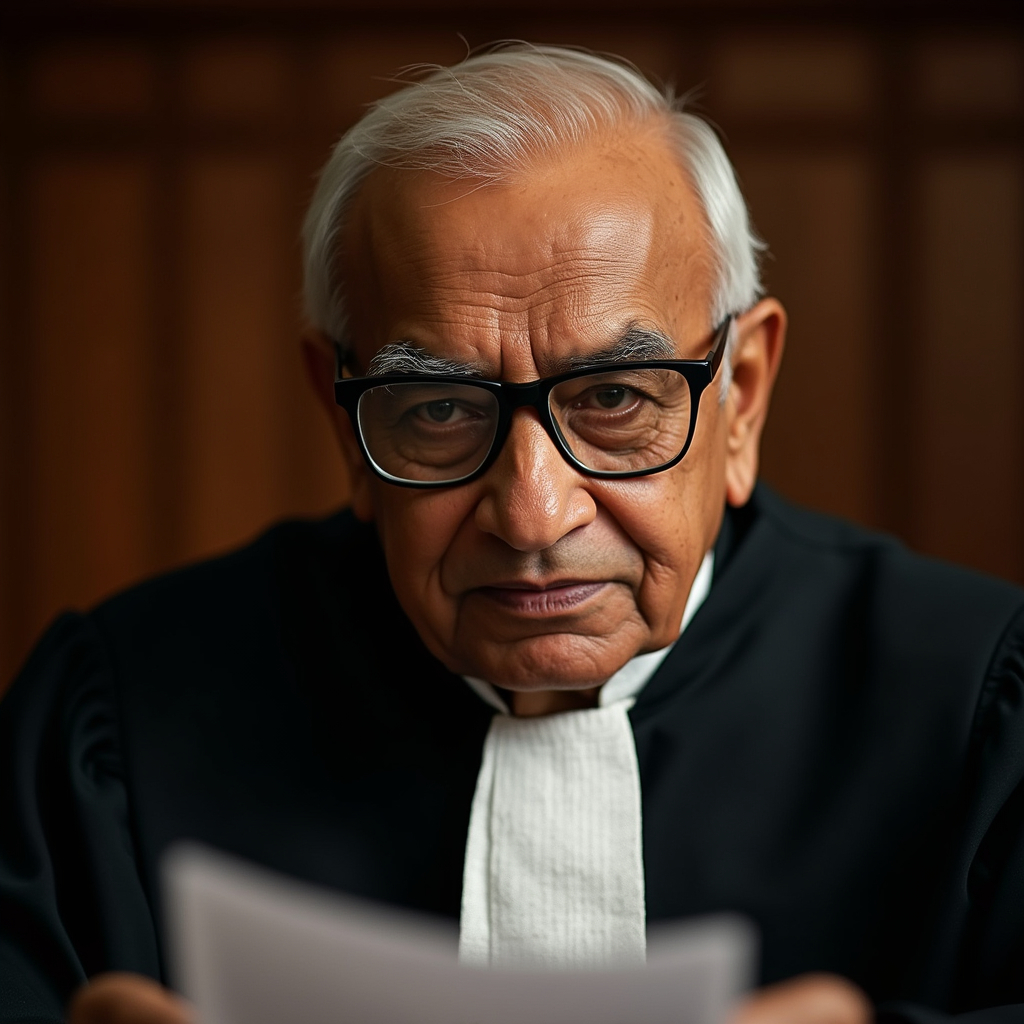
- The total number of seats in the college was 250. 50% of the 250 seats in the college were to be reserved for students belonging to the State of Jammu and Kashmir. The remaining 50% (including the 15 seats reserved for certain other students) were to be reserved for students belonging to other States.
- Certain seats among those reserved for the students belonging to the State of Jammu and Kashmir were again reserved for the students belonging to Scheduled Castes, Scheduled Tribes, and the children of defence personnel martyred or injured during conflicts.
- It was clarified that the reservation made for the students belonging to the State of Jammu and Kashmir was exclusive of the 2 seats reserved for the children of the permanent college employees. It was also clarified that the reservation shall be made in conformity with the order of the Government of the State of Jammu and Kashmir (hereinafter referred to as the “State Government”) for admissions to technical institutions.
- It was further clarified that the determination of merit in the former category of 50% seats would be only on the basis of the marks secured in the written examination, and the rest of the procedure followed was the same as that specified in the 1974 resolution.
- The notice inviting admissions for the academic year 1979-80 specified that the admission procedure that would be followed to allow the said admissions would be the one explained above.
- The petitioners in this Writ petition were the students who applied for admission in one or the other branches of the B.E. course at the college and appeared for the written test on June 16th and 17th, 1979, in due course. They were subsequently required to appear for the next stage of examination, i.e., the viva voce, before a committee of 3 members who interviewed the petitioners.
- They alleged that the interview did not last long for more than 2 or 3 minutes on average. They alleged that none of the questions that were posed to them were relevant to any of the four criteria for the allocation of marks in the viva voce according to the procedure. Instead, the questions that were asked to them were mostly general, based on residence, percentage, etc.
- They stated that, on the announcement of admissions, they found out that the reason for their non-selection for admission was the low marks awarded in the viva voce, while the marks secured by them in the qualifying written test were extremely good.
- It was further stated by the petitioners that some of the candidates got very low marks in the qualifying written test but were successful in securing admission to the college only due to the high marks they obtained in the viva voce.
- They presented a chart before the Court, which indicated the statement made by the petitioners regarding the disparity of marks between them and some of the successful students and on account of which those candidates were preferred over the petitioners.
- Therefore, aggrieved by this process of selection, they approached the Hon’ble Supreme Court by filing a Writ Petition under Article 32 of the Constitution, challenging the validity of the admissions made through this procedure.
Nature of the Society Administering the College
The determination of the status of the college or the question of whether the college falls under the ambit of “other authority” and therefore “State” requires clarity over the nature of the college and the society administering or managing it. For this reason, it is necessary to understand the nature of the society administering the college by looking into the objectives, rules, and other aspects relating to the society as set out in the Memorandum of Association of the society.
Objects of the Society
The objects of the society are laid down in clause 3 of the Memorandum of Association, which includes the following:
- Sub-clause (i) of the said clause laid down that the objects of society include the establishment of a college to provide knowledge and education in different branches of engineering and technology and to promote research in such branches.
- Sub-clause (ii) of clause 3 empowered the society to make rules and regulations for the management of the society and to amend, add, or repeal any of the rules and regulations from time to time with the approval of the Government of India (hereinafter referred to as the “Central Government”) and the State government.
- Sub-clause (iii) of the said clause empowered the society to acquire and retain property in the State Government’s name.
- Sub-clause (v) of the said clause stated that the funds for managing and running the college would be provided by the State and the Central Government.
- The decisions of the society relating to the management and investment of its funds required approval from the State government, according to Sub-clause (vi) of the said clause.
- The details of the accounts of the society and its certification by an auditor were supposed to be mandatorily forwarded annually to the Central and State Governments according to Sub-clause (ix) of clause 3.
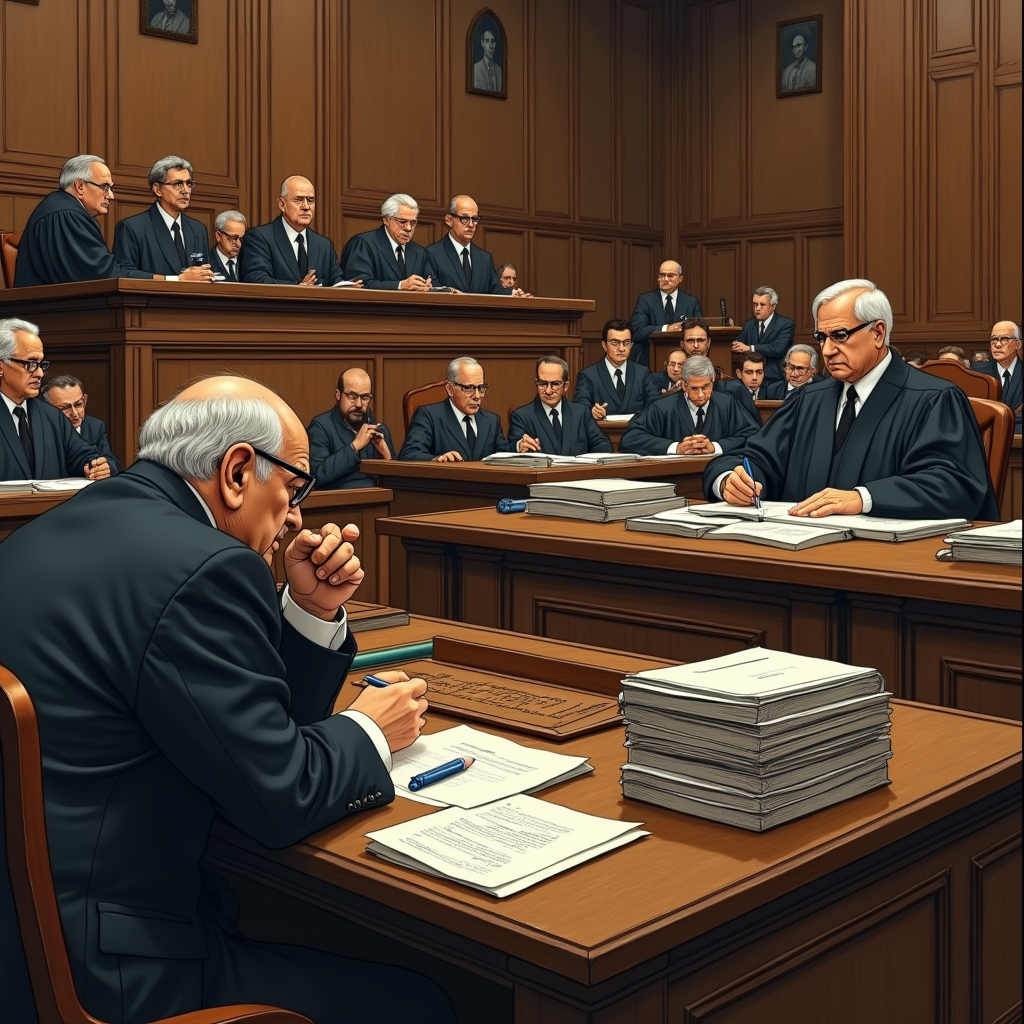
- Further, the State government was empowered under Clause 6 of the Memorandum of Association of the Society to appoint certain persons to review the functioning of the society and the college. It is also empowered to conduct inquiries and subsequently submit a report to the State government. Furthermore, it is empowered under this clause to take appropriate measures or actions on the basis of the report and with the approval of the Central Government. The college or society is required to comply with the measures or directions of the State government.
- Moreover, Clause 7 of the society’s Memorandum of Association empowers the State government to take over the assets and administration of the college if the society or the college is not properly functioning. However, this can be done with the prior approval of the Central government.
- Clause 9 of the Memorandum of Association confers the authority upon the state government to make appointments in respect of some of the key positions of the college, such as the chairman, representatives of the state and central governments, representatives of certain other states, etc., with the consultation and approval of the central government.
The objects of the society, as per the Memorandum, reflected the affiliation and active involvement of the State and Central governments in the affairs of the society.
Rules of the Society
Similar to the objects, the rules of society also shed light on the nature of society. The rules of society are as follows:
- Rule 3 provided for the composition and appointments relating to society. Clause (i) of the rule reaffirmed the composition of the society as laid down under Clause 9 of the Memorandum of Association. Furthermore, Clause (ii) gave authority to the State and Central governments to make appointments of the members of society by mutual consultation.
- Rule 6 laid down that the authority for managing the affairs of the society including its income and property, shall be vested in the Board of Governors (hereinafter referred to as “the Board”) which is the governing body of the society.
- The composition of the Board of Governors was laid down in Rule 7. It provided that the Board shall be chaired by the Chief Minister of the State Government, and other members of the Board include nominees from the State and Central governments and other various nominees and representatives.
- The State government was empowered under Rule 10 to remove any member of society from membership with the approval of the Central government, except the representatives of the State and Central governments.
- Rule 15(iv) empowered the Board to make regulations for the admission of students to various courses. Additionally, Rule 15(xv) mandates the Board to submit reports and accounts of society to the State and Central governments annually.
- Rule 24(i) empowers the Board to make changes in the purpose or purposes for which the society has been established. Rule 24(ii) empowered the Board to make alterations to the rules. However, any such changes or alterations shall be subject to prior approval from the State and Central governments.
The rules indicated that the governments, State as well as Central, have a great role in the appointment of the members of the society and also in the overall decision-making process of the society.
The rules and objects of the society established the presence of a significant role of the State and Central governments in the administration and management of the society. They indicated the significance of the position that has been occupied by the State and Central governments, which are “State” as per Article 12 of the Constitution, in the affairs of the society and the college.
Issues raised
- Whether a society can be considered as “State” within the definition and meaning of the term provided under Article 12 of the Constitution?
- What are the “other authorities” envisaged within the meaning of “State” under Article 12?
Point of law involved
The point of law or the legal questions in this case mainly revolved around the constitutional provisions provided under Part III of the Constitution, specifically around the meaning and definition of the “State” and the right to equality. Some of the relevant legal provisions that were examined in this case are as follows:
Constitution of India
The Constitution of India guarantees various fundamental rights under Part III, which consists of Articles 12 to 35. The relevant fundamental rights and constitutional provisions discussed in this case are as follows:
Article 12
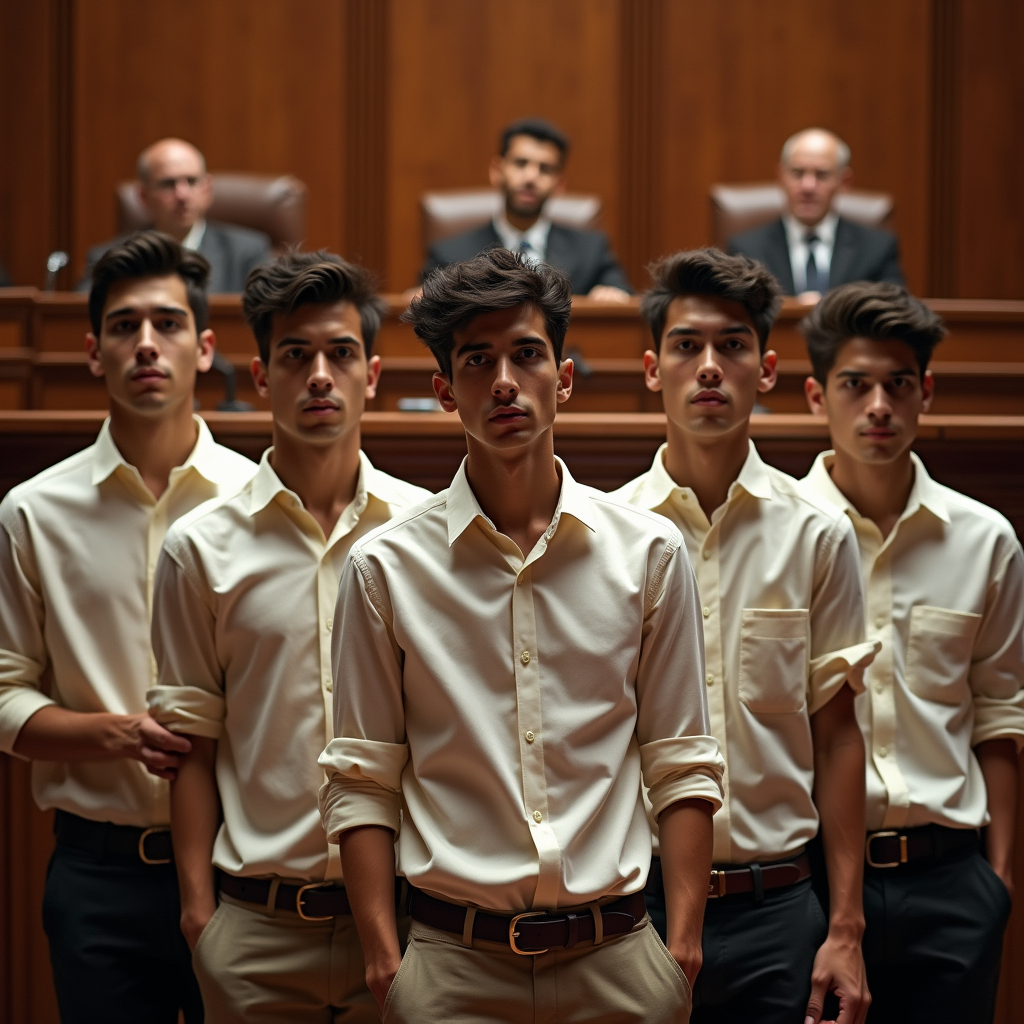
Article 12 of the Constitution lays down the definition of the term “State” wherein it defines the term as “the State includes the Government and Parliament of India and the Government and the Legislature of each of the States and all local or other authorities within the territory of India or under the control of the Government of India.”
The provision under Article 12 is of great significance as it limits the authorities against whom the fundamental rights under Part III of the Constitution can be enforced. Any person aggrieved by the violation of fundamental rights can approach the Court under Article 32 of the Constitution by filing a writ petition only against the authorities who fall under the definition of “State” under Article 12.
The definition of State under this provision has a wide scope since it is not an exhaustive provision but is inclusive, which is reflected through the words “other authorities” in the definition. The scope of the definition of “State”, and more particularly, the scope of the term “other authorities” in the definition, has been expanded by the Hon’ble Supreme Court in various rulings, such as the University of Madras vs. Shanta Bai and Anr. (1953), in which the Apex Court held that “other authorities” under Article 12 means any authority performing governmental functions.
Additionally, the Hon’ble Supreme Court of India in the case of Rajasthan State Electricity Board vs. Mohanlal (1967) held that the term “other authorities” includes “every authority created by a statute and functioning within the territory of India, or under the control of the Government of India.” The Apex Court has further expanded the scope of the term in the cases Sukhdev Singh vs. Bhagat Ram (1975) and R.D. Shetty vs. International Airport Authority of India (1979), etc.
However, the Hon’ble Supreme Court recently, in the case of Kaushal Kishore v. State of Uttar Pradesh (2023), ruled that the fundamental rights under Article 19 and Article 21 of the Constitution can be enforced against persons other than the State or its instrumentalities as well.
Article 14
Article 14 of the Constitution guarantees the right to equality for every individual in India. It prohibits the denial of equality before the law and guarantees equal protection of the law by the State.
The provision encompasses two important aspects of equality. The first aspect is the equality before the law, which means that every individual is equal in the eyes of the law and there shall not be any privilege given to any citizen.
The second aspect of equality under this provision reflects the positive content of the provision. According to the second aspect, the State shall ensure that there is no discrimination of any kind and that every citizen is entitled to equal protection of the laws.
To summarise, the first aspect refers to the guarantee of equal treatment, whereas the second aspect denotes the prevention of discrimination.
The Hon’ble Supreme Court, in the ruling of E. P. Royappa vs. State of Tamil Nadu (1973), held that any act that is arbitrary in nature, is violative of the right to equality under Article 14 of the Constitution.
Article 32
Article 32 of the Constitution guarantees the fundamental right to approach the Hon’ble Supreme Court by filing a writ petition for the enforcement of the fundamental rights guaranteed under Part III of the Constitution.
Any person aggrieved by the violation of the fundamental rights enshrined under Part III of the Constitution can approach the Hon’ble Supreme Court under this provision for the enforcement of fundamental rights against the authorities falling within the scope of “State” under Article 12 of the Constitution.
The Hon’ble Supreme Court in State of West Bengal vs. Nuruddin (1998) ruled that the performance of any duty that is imposed upon certain authorities as per the law is the right of the appellant. The enforcement of such a right can be ensured through the writ of mandamus, which is issued against the authority not performing the duty.
Jammu and Kashmir Registration of Societies Act, 1898
The case dealt with the determination of the status of a society registered under the Jammu and Kashmir Registration of Societies Act, 1898, under Article 12 of the Constitution. The Act provided for the registration of societies in the State of Jammu and Kashmir.
Arguments of the parties
Petitioner
The petitioner’s contentions basically revolved around the violation of their right to equality guaranteed under Article 14 of the Constitution due to the admission procedure of the college, which was contended or alleged to be arbitrary. The various grounds on which the petitioners contended the same are as follows:
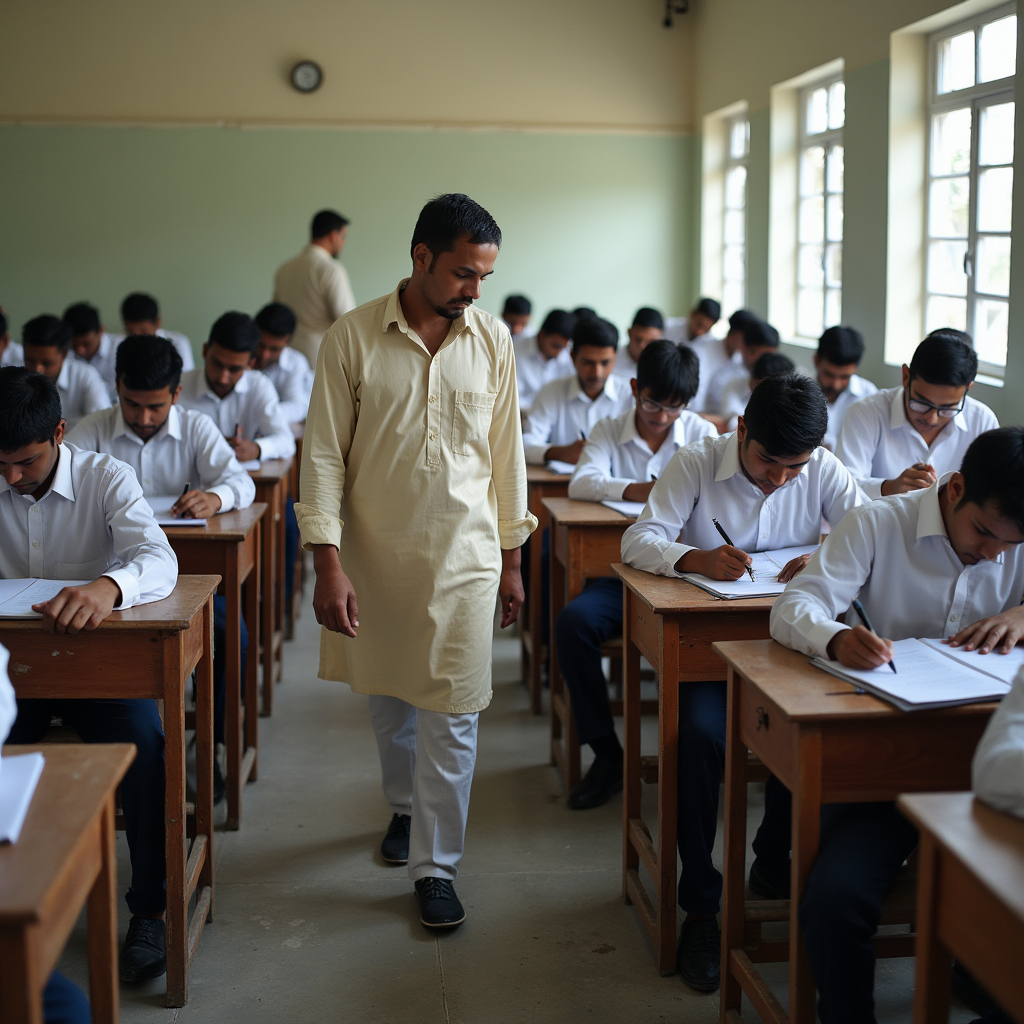
- The primary contention of the petitioners was that the admission procedure adopted by the college to grant admissions was arbitrary on the following grounds or in the given instances or manner.
- Ignorance of the marks obtained by the petitioners in the written examination.
- Determination of the comparative merit of the students or candidates solely on the basis of a viva voce examination.
- The disparity in marks allocated for the viva voce examination against the written examination (50 against 100).
- By conducting the interview for a very short duration of merely 2 to 3 minutes and by asking questions that were completely irrelevant to the four criteria or subjects to determine the suitability of the candidates as per the admission procedure.
- The next contention made by the petitioners was that the admissions granted or the selections made on the basis of viva voce or the oral interview were arbitrary and hence violative of Article 14 of the Constitution. They argued that the oral interview or the viva voce examination failed to provide a proper criterion for determining the suitability of the candidates. They further contended that this kind of examination was subjective and was mostly a test of impression, which is prone to being influenced by various factors such as the bias or prejudice of the interviewer, his/her assumptions, etc. Furthermore, they argued that this form of examination also left scope for the abuse of discretion or authority that is entrusted to the interviewers through discrimination, nepotism, exploitation or favouritism etc. Besides, the petitioners also contended that it was not realistically possible and was unfair to evaluate the merit or capabilities of a candidate based on an interview lasting for a few minutes.
- The third contention of the petitioners was that, even though the selection of candidates on the basis of an oral interview or viva voce is considered a valid procedure for granting admissions, the viva voce examination in this particular instance was unreasonable and arbitrary due to the disparity in the proportion of marks allocated in the overall examination procedure. They argued that the allocation of 50 marks for viva voce against the 100 marks for the written test would mean that only one-third (33.33%) of the total marks are taken into consideration for the selection of candidates. They contended that this allocation of marks and subsequent selection based on such allocation was based on an unreasonable proportion and was therefore arbitrary and violative of the right to equality guaranteed under the Constitution.
- The final or ultimate contention of the petitioners was based on the duration of the interview conducted and the nature of the questions asked during the viva voce examination. The petitioners contended that the viva voce examination lasted only for 2 to 3 minutes on average, and the questions that were asked were also irrelevant to the four criteria based on which the merit of a candidate would be determined, as per the admission procedure. Hence, they argued that it was not possible to assess the suitability of a candidate in such a short period of time, particularly when no relevant questions were asked during the interview.
Respondent
- The primary contention of the respondents was concerning the maintainability of the petition. The respondents contended that the writ petition before the Hon’ble Court was not maintainable. They argued that the college is administered by a society, which is not an agency established by a statute but is a society established under the Jammu and Kashmir Societies Registration Act, 1898. They therefore contended that society is not an “authority” within the meaning and definition of “State” under Article 12 of the Constitution, and hence the writ was not maintainable before the Court.
- The respondents further argued that neither a complaint can be made against the college, stating that it granted the admissions in an arbitrary manner and for violating the right to equality provided under Article 14 of the Constitution, as it was not a State within the meaning of “State” under Article 12 of the Constitution and the rights under Part III can be enforced only against the State.
- The respondents, relying upon the ruling in Sabhajit Tewary vs. Union of India and Ors. (1975), contended that a society under the Societies Registration Act, 1860, cannot be considered as an authority within the meaning of State under Article 12 of the Constitution. They also referred to the case of Sukhdev Singh vs. Bhagatram (1975).

- Moreover, the college refuted the first contention of the petitioners by arguing that the viva voce test allowed the evaluation of the candidates’ eligibility on the grounds of comparative talent, which was ultimately based on a uniform standard. They further contended that this test was preferable to the qualifying test, which allowed for the evaluation of comparative merit.
- Additionally, the college also refuted the final contention of the petitioners by stating that they were interviewed for around 6 to 8 minutes, and only questions relevant to the topics or subjects allotted for viva voce were asked.
Judgement
The Hon’ble Supreme Court in this case, prior to dealing with the merits of the petition, decided to rule upon the maintainability issue, which was raised as the principal objection by the respondents. The Court, after ruling upon the maintainability of the plea, proceeded to deal with the merits of the case, which were contended on four different grounds or contentions, as discussed under the heading of the petitioners’ arguments section mentioned above.
Whether the petition is maintainable before the Hon’ble Supreme Court?
The Court primarily ruled on the maintainability of the plea. It was noted that the petition can be maintainable only if the society falls under the meaning and scope of the expression ‘State’ under Article 12 of the Constitution.
Is society an authority?
Although the Court noted that society cannot be equated with the State or Central government, or any local authority, it ruled that society may fall within the category of ‘other authorities’ mentioned under the meaning and definition of “State” under Article 12.
The Court, noting the nature of the society, which was reflected in the rules and Memorandum of Association of the society, ruled that it was an instrumentality or agency of the government and therefore is an authority within the meaning of ‘other authorities’ mentioned under the definition and scope of the expression “State” under Article 12.
The Court ultimately ruled that, since society is an authority under Article 12, the mandate of fundamental rights against arbitrariness under Article 14 of the Constitution can be enforced against it. Hence, it was held that the petition is maintainable before the Hon’ble Supreme Court.
Merits of the case
Whether the admission procedure was arbitrary?
The Hon’ble Court disagreed with the principal contention of the petitioners, who contended that the admission procedure of the college was arbitrary. It took into consideration the contentions or statements made by the college through an affidavit. The Court ruled that it would not rule the admission procedure as arbitrary merely on the ground that the procedure allowed for consideration of the marks obtained in the viva voce stage over the qualifying examination or on the ground that it refused to consider the marks obtained by the candidates in the qualifying examination.
Validity of the viva voce examination for selection of candidates
The second ground of challenge or contention of the petitioners was the validity of the viva voce entrance examination as a test for the selection of candidates for admission. The Court, with regard to this contention, initially noted that it cannot be ruled out as completely baseless and noted that the contention had some sustainability. However, the Court ultimately refused to agree with the petitioners’ contention that the viva voce examination was invalid or flawed to the extent that the admissions made on its basis could be declared invalid. Although the Court agreed that the viva voce test may not be an adequate method of assessing a candidate’s merit or talent, it was currently not possible to rule the test as irrational or irrelevant due to the absence of any other better option to evaluate or determine the merit of the candidates.
Nevertheless, the Court observed that the viva voce examination should not be considered or relied on as the sole method or test of determining a candidate’s merit but should only be regarded as a supplementary test, irrespective of matters of employment or admissions to the colleges. It was also noted that the qualifications, integrity, and calibre of the persons conducting the viva voce examination should be taken into consideration before appointing them for that purpose.
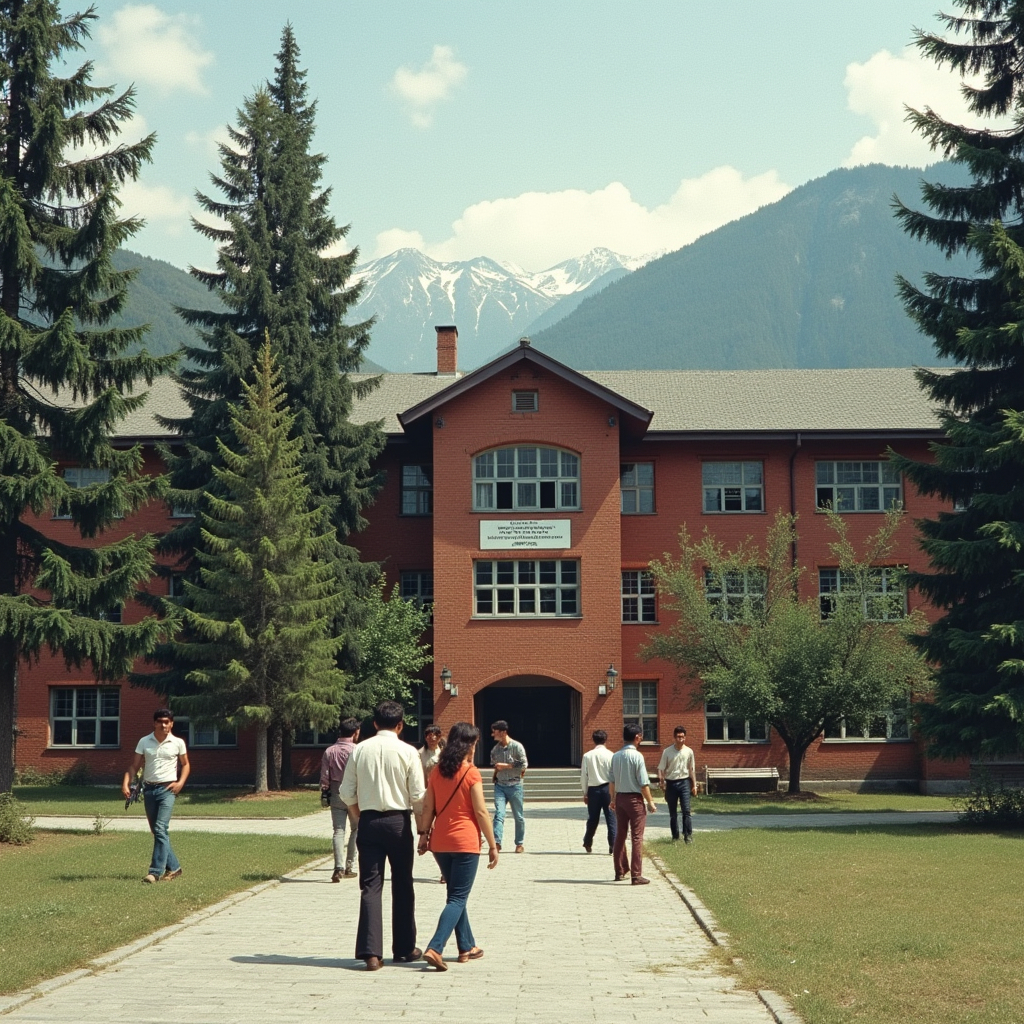
Whether the Viva Voce examination in the present case was arbitrary and unreasonable?
The Hon’ble Supreme Court noted that the contention of the petitioners that the viva voce examination in the present case was arbitrary and unreasonable due to the disproportionate allocation of marks in the two stages of examination cannot be regarded as invalid. The Court noted that it cannot accept the high or disproportionate allocation of marks for the viva voce or oral interview as a mode of examination that is completely free from arbitrariness, given the erosion in ethics and the increase of corruption and nepotism. The Court held that the allocation of one-third (33.33%) of the total marks merely for the interview is undoubtedly unreasonable and arbitrary. It, therefore, ruled that allowing or granting admission to the candidates on the basis of the admission procedure, which had such an arbitrary process or methodology, cannot be held valid.
In spite of holding the admission procedure and the admissions arbitrary, the Court, noting that a period of nearly 18 months had already lapsed since the admissions were made in the academic year 1979-80, observed that it would not be justified to set aside the admissions made in the instant case.
However, the Court reiterated that this kind of admission procedure requires introspection, and both the State as well as the Central government must take appropriate measures to ensure that the right persons are involved in the interview or the admission process in general.
Moreover, the Hon’ble Court ruled that the allocation of more than 15% of the total marks of any examination merely for the oral interview would be unreasonable and arbitrary, and such allocation is liable to be declared unconstitutional and is hence liable to be struck down by the courts.
Duration of the interview and the relevance of the questions asked
The Hon’ble Supreme Court ruled on this issue on the same note as it did on the previous grounds. It noted that it was not possible for the selection committee to assess the capabilities and merit of a candidate within a mere 2 or 3 minutes, particularly when no questions relating to the four factors based on which the assessment was to be done as per the admission procedure were asked. Hence, the Court ruled that if any oral interview was conducted in the manner alleged above, such an interview was undoubtedly corrupt, and admissions granted on the basis of such an interview were unreasonable and arbitrary.
However, the Court once again observed that it was not willing to set aside the admissions made for the academic year 1979-80 for the reasons provided by it while ruling upon the previous issue.
The Court further reiterated the limit on the percentage of marks that were to be allocated for the oral interview out of the maximum marks and ruled that only relevant questions should be asked to the candidates based on the assessment factors that would render the oral interview reasonable and non-arbitrary. It is further recommended that the oral interviews be recorded to ensure transparency, and such recordings can be used as evidence when required to eliminate any disputes or controversies challenging the interviews.
Ratio Decidendi
Maintainability of the petition
The Hon’ble Court, while deciding upon the maintainability of the petition, noted that the only valid ground on which the admissions could be challenged was that the admission procedure adopted by the college was arbitrary, which, as a result, violated the right to equality of the petitioners under Article 14 of the Constitution. It was noted that the petition can be maintainable only if the society falls under the ambit and meaning of ‘State’ under Article 12 of the Constitution since fundamental rights can be enforced only against the State. Hence, the Court proceeded to examine whether society, and subsequently, the college, can be regarded as a ‘State’ under said provision.
Whether society falls within the meaning of the expression ‘State’ under Article 12 of the Constitution?
The Court, while examining the inclusion of society within the meaning and scope of the expression ‘State’ under Article 12 of the Constitution, observed that a society can never be treated on equal terms with the Central or State government, nor can it be considered a local authority. However, the Court observed that society should be falling within the ambit of the term ‘other authorities’ mentioned in the provision for it to fall within the meaning and scope of the “State”.
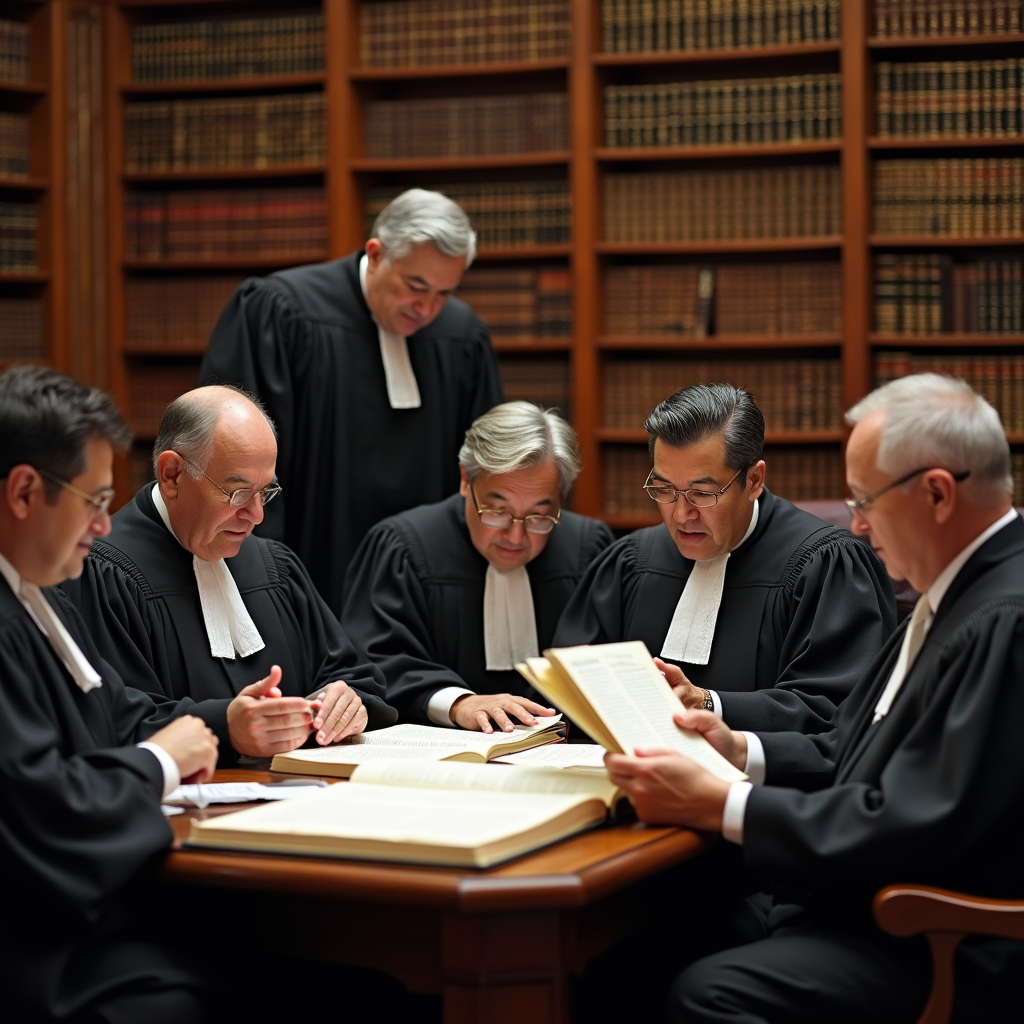
The Court noted how corporations, private institutions, or agencies were gaining importance in administrative task performance and becoming a third arm of the government in the form of administrative gadgets. It was also noted that the flexibility and fewer restraints are allowing the government to resort to such agencies or corporations for carrying out administrative tasks. The Court observed that in cases of such agencies or corporations, the complete authority and ownership always rest with the State, and it is also the State that is accountable for the actions of such agencies since they are operated by the State. The Court basically noted that such agencies or corporations are the extended arm of government organs. Accordingly, the Court ruled that although corporations and agencies are different juristic persons or legal entities, they are subject to the same constitutional restrictions as the government itself.
The Hon’ble Supreme Court cautioned regarding the dangers of not subjecting such agencies and corporations to the same constitutional limitations. It noted that if such agencies are allowed not to abide by the constitutional mandates of fundamental rights as an obligation, then it would result in the deterioration of their efficiency. It was further observed that such a situation would also enable the government to adopt ways to disregard fundamental rights through corporations or agencies and control them. The Court reiterated that this would leave fundamental rights to a mere promise of illusion or a mere dream. It was observed that the employment of a corporate approach is not to free the government from its fundamental obligation to respect fundamental rights and not to rescind them. It was further observed that the veil of corporations on the government is only to allow the government to function freely from rigidity and constraints but not to disregard fundamental rights.
The Court therefore held that if any corporation is an instrumentality or an agency of the government, then it must be regarded as an “authority” under Article 12 of the Constitution.
An instrumentality or agency of the government as an authority under Article 12
The Hon’ble Supreme Court, on account of the rationale mentioned above, went on to analyse if society was an instrumentality or an agency of the government to decide if it was an ‘authority’ within the meaning of “State” under Article 12.
The Court noted the ruling delivered in the case of Sukhdev Singh v. Bhagatram (1975) where it had laid down a test to determine if any corporation is an authority and subsequently falls within the meaning and definition of “State” under Article 12 of the Constitution. The Hon’ble Supreme Court in the said case had propounded the test of instrumentality or agency of the government i.e., if any corporation is an instrumentality or agency of the government, then it may be regarded as an authority under Article 12 of the Constitution.
It referred to the unanimous judgement delivered in the case of R.D. Shetty vs. International Airport Authority of India (1979). The Hon’ble Supreme Court, in the said case, had affirmed the test outlined in the case of Sukhdev Singh v. Bhagatram (1975) as a satisfactory test to determine if any corporation is an authority within the scope of Article 12. It had further noted the origin of the employment of corporations as the instrumentalities or agencies of the government for accomplishing public functions for the first time in the Resolution on Industrial Policy by the Government of India in April 1948. It was noted that after that and its subsequent industrial policies, the government undertook the establishment of corporations to perform public functions, which act as the instrumentalities and agencies of the government. The Hon’ble Court in that case also discussed the question of determining whether any corporation is an instrumentality or agency of the government and laid down certain tests for determining it.
The Court noted the various observations made by the Hon’ble Court in R.D. Shetty vs. International Airport Authority of India (1979) and concurred with the said observations. It summarised the test laid down for determining whether any corporation is an instrumentality or agency of the government as follows:
The following are the various instances when any corporation can be regarded as an instrumentality or agency of the government:
- If the government holds the entire share capital of the corporation.
- When the value of financial assistance from the State is almost equal to the expenditure of the corporation.
- When the corporation enjoys State protected or State conferred monopoly status.
- When the corporation performs functions that are of public importance or relevant to those performed by the government.
- When the State holds deep and extensive control over the corporation.
- When a department of government is transferred to a corporation or it is transformed in that manner.

Based on the rationale given in R.D. Shetty vs. International Airport Authority of India (1979), the Court reiterated the observation made in that case that if any corporation is an instrumentalist of the agency of the government, then it would be regarded as an ‘authority’ within the meaning of the expression “State” under Article 12 of the Constitution. The Court also referred to the case of U.P. Warehousing Corporation vs. Vijay Narayan (1980) and noted that the same view was taken.
The Court clarified that the notion of instrumentality or agency is not restricted to a corporation established by a statute but also extends to companies or societies based on the relevant factors. It was observed that the objective of the establishment of any society has to be considered to determine if it is an instrumentality or agency of the government rather than looking into the procedure of establishment.
Whether society is an instrumentality or an agency of the government
The Court observed that the answer to the said question would obviously be in the affirmative, noting the contents of the Memorandum of Association and the Rules of the Society. Considering the role and authority entrusted to the State as well as the Central government, it was ruled that society is an instrumentality or an agency of the State and the Central government. It was therefore held that society is an ‘authority’ within the meaning of “State” under Article 12 of the Constitution.
The Court ultimately ruled that society, by virtue of being an authority within the meaning of “State”, was liable to obey the constitutional mandate of the right to equality under Article 14 of the Constitution. It follows that the right against arbitrariness under the aforesaid provision can be enforced against society and the college through society. Hence, the Court noted that the petition cannot be ruled as not maintainable.
Implications of society being an authority
The Hon’ble Court also shed light on the implications arising out due to any society or corporation falling under the category of ‘other authorities’ within the meaning and scope of “State” under Article 12. The rulings and observations reflect the difference that the inclusion of society under the category of ‘other authorities’ under the said provision would make.
The Court ruled that any authority falling under the meaning of ‘other authorities’ is subject to the same constraints as the government under Article 12 of the Constitution. It ruled that such authority is obliged to follow the constitutional mandates and limitations due to its inclusion within the scope of “State” under Article 12, including the mandate of fundamental rights under Part III of the Constitution.
The Court held that if society is an authority within the meaning of the expression “State” under Article 12, then it must respect the constitutional obligation of right against arbitrariness within the scope of the right to equality laid down under Article 14 of the Constitution. It noted the noteworthy ruling delivered in E.P. Royappa vs. State of Tamil Nadu (1973), where the Hon’ble Supreme Court observed that equality and arbitrariness are opposite to each other and further ruled that any act that is arbitrary is inherently unequal and is therefore violative of Article 14 of the Constitution and also violative of Article 16 if the matter is relating to public employment. The Court also noted the ruling delivered in Maneka Gandhi vs. Union of India (1978), where the Hon’ble Supreme Court reaffirmed the observations made in the judgement of E.P. Royappa vs. State of Tamil Nadu (1973).
Accordingly, the Court ruled that whenever any action of the state, even if it is merely of an ‘authority’ under the meaning of Article 12, is arbitrary, such action is to be struck down by Article 14, which ensures protection against arbitrariness.
Merits of the case
The Court took into consideration the statements made by the college through the affidavit while adjudicating upon the merits of the instant case. It noted the college’s statement that the regulation of admission procedures through the medium of an entrance exam was necessary to ensure that the candidates’ admissions were not impacted due to the difference in the dates of the qualifying examination conducted by the different boards of Jammu and Kashmir and the late results. It also noted the statement that the oral interview assists in the determination of the comparative merit of the candidates on a uniform standard through the interview instead of its determination on the basis of the qualifying examination conducted by two different boards. Therefore, the Court observed that it would not hold the admission procedure as arbitrary merely on the ground that it regulated the admission through the oral entrance exam and did not consider the marks obtained in the qualifying examination.
Although the Court noted that the challenge to the Viva Voce test is not completely unreasonable, it also observed that the test is very much relevant in the majority of the entrance tests to determine the potential of the candidates. It was noted that the test has been recognised by the courts in various cases. It noted the ruling delivered in R. Chitralekha vs. State of Mysore (1964), where the court refused to declare the oral interview as arbitrary, unreasonable, or irrelevant. It also noted the ruling of Peeriakaruppan vs. State of Tamil Nadu (1970), where the court refused to agree with the contention that the oral interview is defective to an extent for it to be declared useless.
Accordingly, despite noting that the oral interview might not be an adequate test to determine the ability and merit of the candidate, it refused to hold it as arbitrary, irrelevant, or unreasonable.
The Court admitted the petitioners’ contention that the marks allocated for the oral interview were relatively high. It was noted that the allocation of such a high percentage of marks only for the oral interview cannot be accepted as completely free from arbitrariness considering the fading of moral values and the increase in favouritism and corruption. It noted the rulings delivered in the cases of Peeriakaruppan vs. State of Tamil Nadu (1970) and Nishi Maghu vs. State of Jammu and Kashmir (1980), where the Court had made observations concerning the allocation of excessive marks for the oral interview. The Court in the said case had noted that the reservation of 50 out of 150 marks for the interview was excessive, particularly when the time allotted for the interview was only around 4 minutes.
The Court further noted that the marks allocated for the oral interview in the UPSC examination for the selection of candidates for various departments of civil services in which personal characters and ability hold great relevance are merely around 12.5% of the total marks. Hence, the Court ruled that the allocation of one-third (33.33%) of marks only for the oral interview is arbitrary, and the admissions made on the basis of such a procedure are invalid. However, it was observed that setting aside the admissions made in the academic year 1979-80 after a long duration of 18 months would jeopardise the admissions of the students whose admissions are valid and not arbitrary and who have completed 3 semesters of the course. It was also noted that it would not be possible for the petitioners to join in the same batch since such a long duration had lapsed.
Nevertheless, the Court reckoned that it would have still taken steps to restore the admissions despite the existence of the reasons mentioned above if the petitioners had established the mala fide actions of the committee that interviewed them, but the petitioners had failed to do so. It noted that more convincing evidence was required to rule upon the allegation of mala fide actions against the interviewing committee and to hold it accountable.
The Court admitted the contention made by the petitioners regarding the duration of the interview. It was noted that the interview did not last longer than 2 or 3 minutes, making it unreasonable and invalid to assess the potential of the candidates, especially when no questions relevant to the factors determining the merit of the candidates were asked. The Court refused to consider the denial of the representative of the college to this contention, considering his absence during the interview. It was also noted that none of the interviewers came forward to deny the allegation, because of which the Court proceeded with the impression that the oral interview lasted for a maximum of 2 to 3 minutes.
Analysis
The Hon’ble Court made a majority of the observations in this case only on the issue of maintainability and the meaning and scope of the expression ‘authority’ and subsequently “State” under Article 12 of the Constitution. While examining the maintainability of the petition, it laid down a clear law with regard to the meaning and scope of the expression “State” under the said provision.
The Court provided a clear and detailed explanation and rationale with regard to the maintainability of the petition, or rather, the scope of the expression ‘authority’ under Article 12. It clarified what kind of societies, companies or corporations can be regarded as an authority within the meaning of the term “other authorities” in the said provision. The Court noted various observations and rulings made on this issue and further simplified the principles of law in this regard by listing down the instances when any corporation can be considered as an instrumentality or an agency of the government and can thereby be regarded as an authority, within the meaning of Article 12, considering the characteristics of such corporation. However, it is important to note that the simplified list of instances is not an exhaustive one but only denotes the nature of the corporations that may be considered as authorities under the said provision.
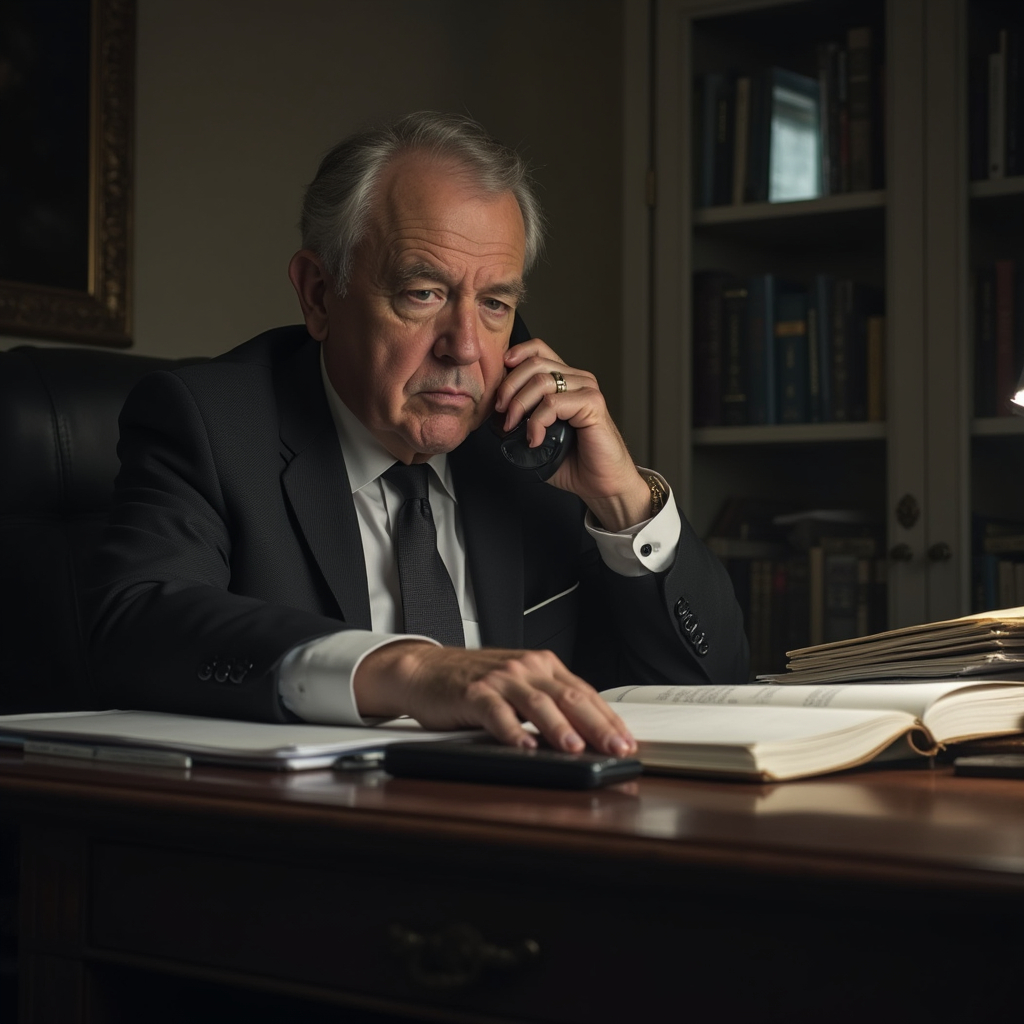
Furthermore, the Court also emphasised the significance of any authority falling within the meaning of authority or under the broader scope of “State” under Article 12. It drew attention to the extension of the constitutional obligation of respecting and adhering to the fundamental rights enshrined under Part III of the Constitution to corporations and societies by virtue of their inclusion within the meaning and scope of Article 12. The expansion of the meaning and scope of “State” under Article 12 means greater protection of the fundamental rights of individuals and lesser scope for the government to override those rights by carrying out public functions by establishing corporations and societies, etc. The Court noted the dangers of not enabling the expansion of the scope of the expression “State” by observing that allowing corporations and societies (especially those involving significant government intervention or interference in their functions) not to adhere to the constitutional mandates would ultimately lead such mandates to remain only on paper as a dream and not as a reality.
The Court also shed light on the contents and scope of the right to equality under Article 14 of the Constitution, reaffirming and noting the landmark ruling in the case of E.P. Royappa vs. State of Tamil Nadu (1973), where it was ruled that the right to equality inherently includes the right against arbitrariness.
The Hon’ble Supreme Court, after elucidating the scope of Articles 12 and 14 in a detailed manner, proceeded with the examination of the merits of the case. Apart from the principal contention challenging the validity of the admission procedure as a whole, the Court noted the other three contentions of the petitioners as valid and reasonable.
The Court was dealing with the first two contentions from a larger perspective and not limiting itself to the present case. The first two contentions were concerning the challenge to the admission procedure and the oral interview in general. The Court’s decision on these two contentions was in the negative, where the Court refused to accept the contentions of the petitioners. It rejected the principal contention of the petitioners, considering the necessity of regulation of the admission procedure through the entrance exam for maintaining a uniform standard of assessing and determining the merit of the candidates. Furthermore, concerning the second ground of challenge, the Court initially admitted the contention of the petitioners and accepted that the oral interview might not be an appropriate method of examination, but it refused to declare the oral interview as invalid considering the absence of any other better or adequate mode of examination or test to determine the potential or merit of the candidates.
However, the Court served a mere recommendatory purpose concerning the second ground, where it pointed out that there is a need for introspection with regard to the calibre of interviewers and also recommended that the oral interview not be treated as the sole basis for determining a candidate’s merit.
The other two grounds of challenge were exclusively related to this case and did not involve any larger perspective. The Hon’ble Court decided the said two grounds of challenge in the affirmative, upholding the contentions of the petitioners, but yet couldn’t accommodate any substantial relief to the petitioners considering the lapse of 18 months since the admissions took place. It refrained from declaring them as invalid as it would impact other students as well who have no relation to this case and whose admissions were valid, even though it ruled the admission procedure in this case as unreasonable due to the allocation of a high percentage of marks exclusively for the interview. Similarly, the Court also upheld the last contention of the petitioners concerning the duration of the interview but refrained from granting any relief due to the same aforesaid reasons.
The Court, however, while deciding upon the last two grounds of challenge, laid down certain guidelines or regulations that are to be followed to ensure non-arbitrary and reasonable procedures. It laid down an upper limit of 15% of the total marks that could be allocated for the oral interview, and it also clarified that only relevant questions must be asked during the oral interview. The Court further recommended the video recording of the oral interviews to ensure transparency and clarity.
Although the Court admitted 3 out of the 4 grounds of challenge contended by the petitioners, it did not grant any substantial relief as such to the petitioners due to the lapse of a long duration of time and other obvious reasons. The only relief that was granted by the Court was the granting of admissions to the petitioners for the academic year 1981-82.
The Court’s role in this case was more of a recommendatory authority since the majority of the operative part of the relief was in the form of recommendations or suggestions to the State. Although the Court adjudicated the oral interview and admissions in this case as arbitrary and unreasonable, it refrained from setting aside the admissions due to the lapse of time and also because of the lack of solid material evidence from the petitioners to establish that the oral interview was completely biassed, unreasonable, and arbitrary. Nevertheless, it is necessary to note the significant value this ruling holds and serves as a precedent for cases relating to eligibility or selection of candidates for any purpose. The guidelines concerning the limits that have to be maintained during selection through the interview procedure are of great importance and value.
Significance of the case in current times
This ruling holds notable value concerning the scope of the expression “State” and various authorities within its meaning for the enforcement and fulfilment of the constitutional obligation of fundamental rights laid down under Part III of the Constitution. The expansion of the scope of the State is extremely necessary to ensure that the fundamental rights of the citizens are not taken for granted, especially when the corporate methodology is becoming more prevalent within the government in performing public functions. Such an expansion is of great significance, as it prevents the government from disregarding fundamental rights by resorting to private or corporate institutions to perform public functions.
It has recently been seen that the corporatization or privatisation of many institutions that perform public functions that are generally performed by the State, the government, and its authorities is gaining popularity. One of the recent examples is the privatisation of a few airports that have taken place across the country through the Public Private Partnership (PPP) model for the operation and management of the airports by leasing them on a long-term basis to private players. In these kinds of situations, the scope of the terms “State” and “authority” plays a crucial role in ensuring accountability and protection of the fundamental rights of individuals. If the scope of the aforesaid terms doesn’t extend to these kinds of corporations that get hold of institutions carrying out public functions (airports in the given case), it becomes easy for the government to bypass the fundamental rights through the corporations. Therefore, it is vital to make certain that any corporation performing public functions respects and doesn’t disregard fundamental rights and is held accountable in the way that the government would have been.
One of the noteworthy observations in this regard was made in the ruling of the University of Madras vs. Shanta Bai and Anr. (1953), where the Court noted that the term “other authorities” refers to any authority performing governmental functions. This observation, along with the clear law laid down in the present case, Ajay Hasia vs. Khalid Mujib (1981), concerning the scope of the “State” and “other authorities” under Article 12, holds great significance in ensuring flexibility for the government to carry out its functions and perform obligations through corporations and societies while protecting the fundamental rights of individuals.
Another recent ruling in this regard was delivered by the Hon’ble Apex Court in the case of Kaushal Kishore vs. State of Uttar Pradesh (2023), where it ruled that the fundamental rights under Articles 19 and 21 of the Constitution may be enforced against persons other than the State and its instrumentalities. Henceforth, this ruling provides that the enforcement of the fundamental rights under the two aforesaid provisions need not necessarily require the State as provided under Article 12 or even any of its instrumentalities. The fundamental rights only under these two provisions can be enforced against private persons as well. It implies that the scope of expressions under Article 12 is irrelevant when it comes to the enforcement of the fundamental rights provided under Articles 19 and 21 of the Constitution.
Conclusion
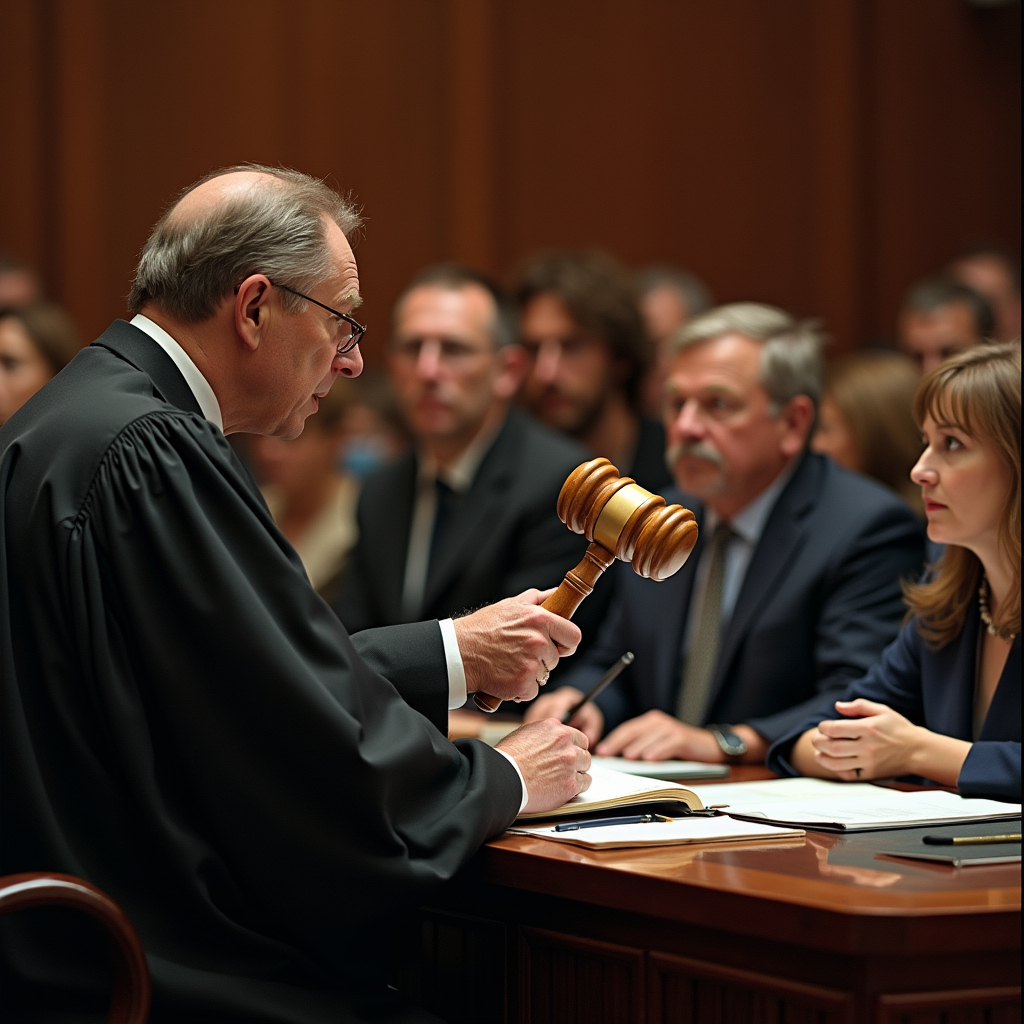
It is vital to ensure the protection of fundamental rights to the maximum possible extent and in every possible manner, which shall leave the fundamental rights a mere piece of paper, as noted by the Hon’ble Apex Court in various rulings. In numerous instances, the government may bypass the constitutional obligation or mandate to protect fundamental rights, either intentionally or sometimes, for the sake of performing certain functions. However, it is the duty of the courts to ensure that the performance of any public function is not unconstitutional or arbitrary, as was done in the present case and a few of the other cases. The Hon’ble Court, by providing instances where any institution can be considered as an authority, has laid down a clear law relating to the nature of authorities within the meaning of State under Article 12. The Court has also made significant recommendations concerning the changes that need to be brought about in the field of education, employment, or the procedures of admission in any of those. It is important to note that the existing procedures require introspection and necessary changes must be made after such introspection. Overall, although the ruling is concerned with a few admissions to a college, the various observations and recommendations made in this ruling are of significant value.
Frequently Asked Questions (FAQs)
What is the significance of Article 12 as a constitutional provision?
Article 12 of the Constitution defines authority within the meaning of the expression “State”. However, as noted in the present case, this definition of authority and its application are limited only to the fundamental rights under Part III and also to Part IV by virtue of Article 36 of the Constitution. However, the Court clarified that this definition does not extend to the purposes mentioned in other constitutional provisions.
What are the authorities against whom fundamental rights can be enforced?
Article 12 lays down against whom the fundamental rights can be enforced. The instrumentalities included within this provision are the Central and State legislatures and governments, local authorities, and other authorities.
Only the fundamental rights under Articles 19 and 21 can be enforced against persons other than the State and its instrumentalities, as held in Kaushal Kishore vs. State of Uttar Pradesh (2023).
Is the right against arbitrariness a fundamental right?
Yes, the right against arbitrariness has been noted as a part of the right to equality under Article 14 of the Constitution by the Hon’ble Supreme Court in E.P. Royappa vs. State of Tamil Nadu (1973).
Can private institutions be considered an authority or State under Article 12?
Yes, any private institution can be considered an authority or State, if it satisfies the test of instrumentality or agency of the government which was laid down by the Hon’ble Court in various rulings such as Rajasthan State Electricity Board vs. Mohanlal (1967) and Sukhdev Singh vs. Bhagat Ram (1975).
In simple terms, any private institution can be regarded as an authority or State if it involves substantial interference from the government or receives significant financial funding or assistance from the government.
References
- https://www.researchgate.net/publication/348621777_CASE_ANALYSIS_ON_AJAY_HASIA_Etc_V_KHALID_MUJIB_SEHRAVARDI_Ors
- https://www.ourlegalworld.com/ajay-hasia-etc-vs-khalid-mujib-sehravardi-ors-case-analysis/
- https://legalvidhiya.com/ajay-hasia-and-others-v-khalid-mujib-sehravardi/
- https://edurev.in/t/336354/Ajay-Hasia-v-Khalid-Mujib
- https://lawtimesjournal.in/ajay-hasia-etc-vs-khalid-mujib-sehravardi-ors-etc/
- https://fitinlaw.wordpress.com/2020/08/03/ajay-hasia-v-khalid-mujib-sehravardi-air-1981-case-summary/
 Serato DJ Crack 2025Serato DJ PRO Crack
Serato DJ Crack 2025Serato DJ PRO Crack










 Allow notifications
Allow notifications



